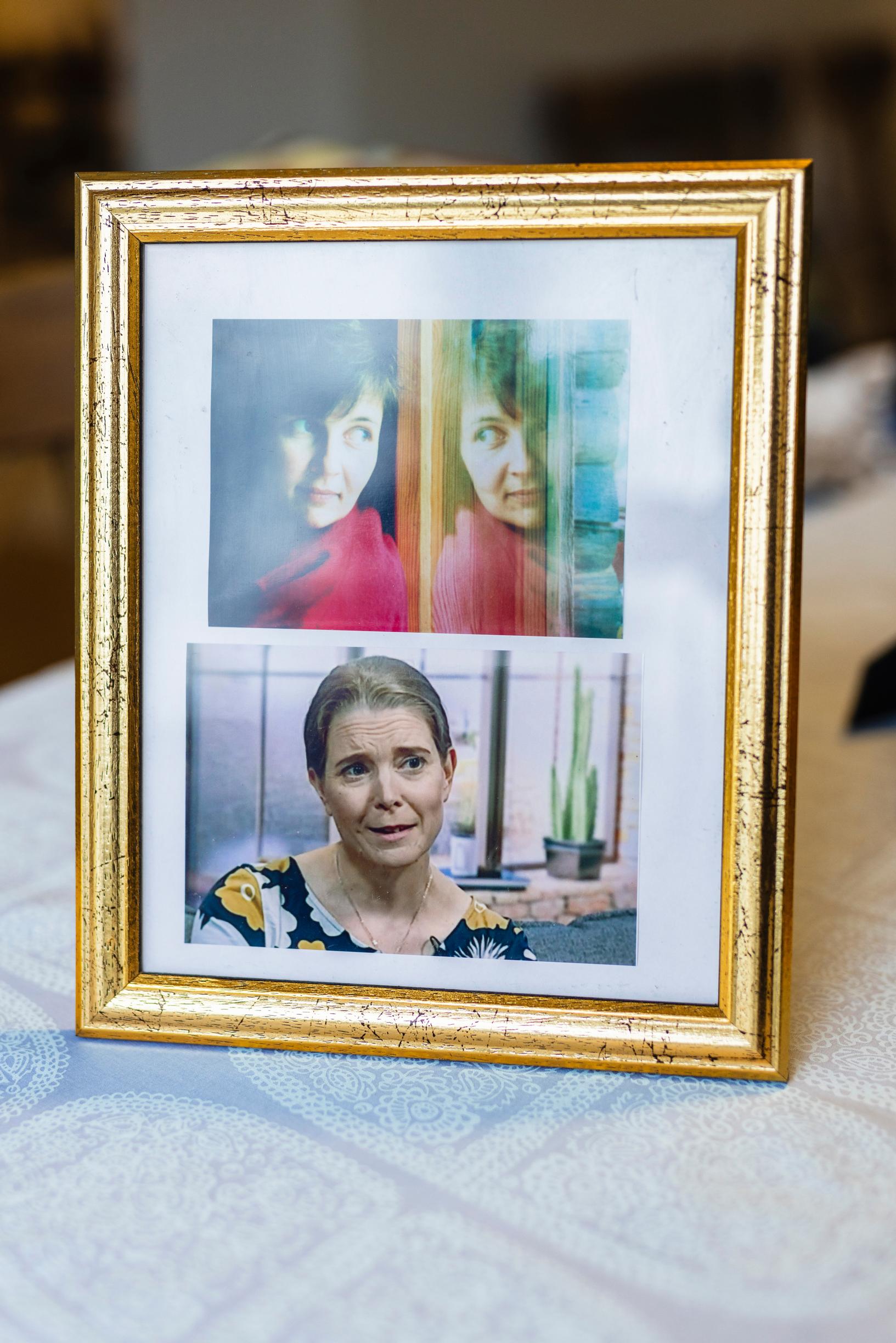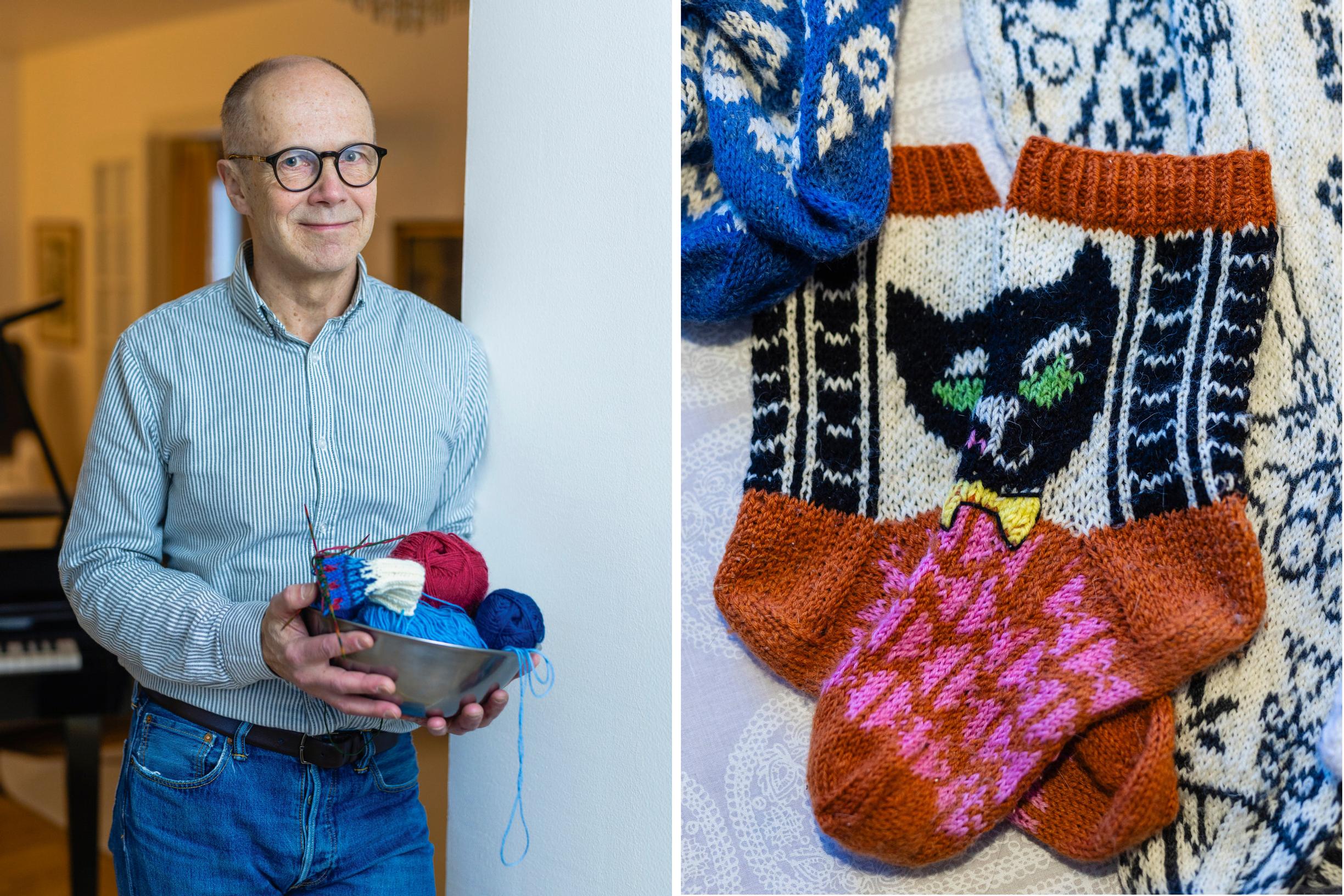
Taught to knit by his wife—now he knits for his new love using his late wife’s teachings
Juha Kuivanen took up knitting thanks to his wife, Kaija. When Kaija passed away from cancer, he was overwhelmed by grief. However, a new love rekindled his passion for knitting.
If you peek through the window of a house in Espoo, Finland, on a typical weekday evening, you’ll often witness the same scene: a man sitting alone in an armchair, knitting needles in hand. Balls of yarn are cozily stacked next to the chair. Music drifts from the stereo—perhaps Bach or Bruce Springsteen. The TV isn’t blaring in the background because the man is focused on each row of the growing knitting project.
If you had looked through that window four years ago, you would have seen a different evening scene. Back then, Juha Kuivanen still had his wife Kaija by his side, patiently teaching him the basics of knitting.
It all began with an offhand suggestion from Juha.
In 2020, the Icelandic sweater craze was at its peak, and Juha fell in love with a sweater pattern. Kaija offered to knit him the sweater, but she asked him to choose the colors himself.
“Something clicked in my head at that moment. I became part of the creative process and got curious,” Juha recalls.
At first, Kaija showed Juha how to make a stitch. Working with his hands and having good coordination came naturally to Juha, but even so, his first practice attempts were clumsy. They then decided to record Kaija’s tutorial sessions on video, so that Juha could go back to them any time.
Once Juha got the hang of it, a whole new world opened up for him.
“Neuloosi is definitely the right word to describe how completely I got hooked,” Juha says with a laugh. (Neuloosi is a play on the Finnish words neule and neuroosi, knitting and neurosis, and could be translated as knitosis.)
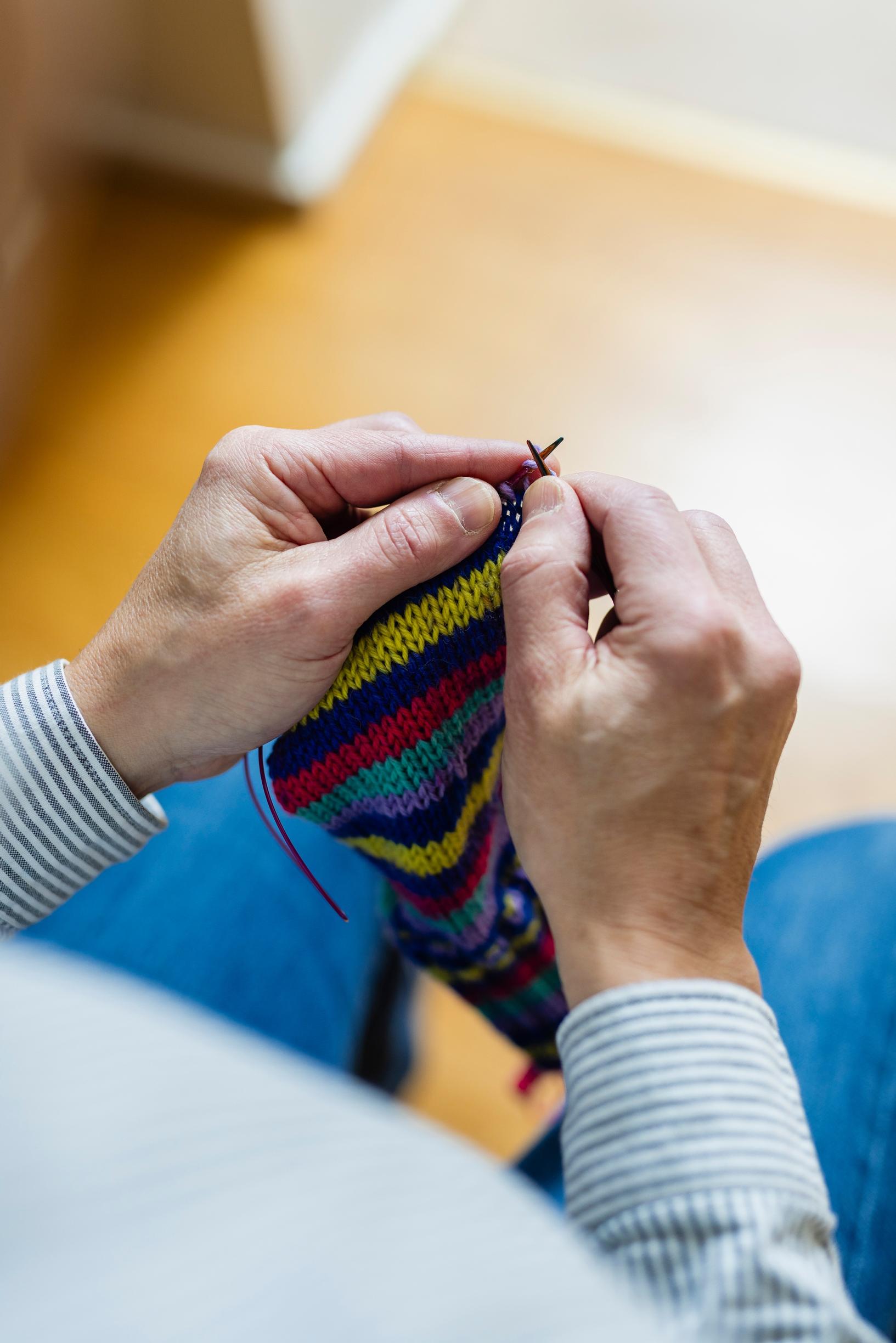
Juha knew Kaija as a knitter from the very first time they met.
The couple first got to know each other 50 years ago in secondary school in Mikkeli. They sang in the same choir, and Juha recalls how Kaija always used to knit during choir trips.
Later on, they started dating and got married 40 years ago. For decades, Juha watched how much joy knitting brought Kaija.
When knitting became a shared hobby, Juha and Kaija would sit side by side for hours, chatting as they both worked on their own projects.
Juha thinks Kaija had mixed feelings about his newfound enthusiasm. On one hand, she was happy to have a hobby partner at home. On the other, she had lost something that used to be hers alone.
“All of a sudden, I was constantly asking for advice and help. But I think that in Kaija’s mind, the positives outweighed the negatives.”
Kaija was indeed used to Juha’s sudden bursts of passion. Whenever inspiration struck, he’d dive right in, whether it was making amateur films or composing his own music. Now, his enthusiasm for creation and experimentation was entirely focused on knitting.
“At first, I thought working on a sweater would be a never-ending project. But I soon realized I’m actually both fast and meticulous. Maybe that’s because as a musician, I’m nimble-fingered and have a sense of rhythm. And besides, Kaija was a great coach.”
“I wanted to show her I could manage on my own because she had taught me so well.”
Juha felt good when Kaija complimented his precise stitching. After all these years, he was able to delight his wife by giving her knitted gifts—she had always been the craft lover in the family.
“I wanted to show her that I could do it by myself because she had taught me so well.”
Juha began challenging himself, wondering what he could make that no one else had thought to try before. Together, they brainstormed how to carry out even his wildest ideas.
“Painter Piet Mondrian’s graphic style is really cool. I wanted to incorporate it into a pair of mittens, but without making them too warm. I wondered if it would be possible to do it in a way other than the typical stranded colorwork.”
Kaija introduced Juha to the intarsia technique, which allows you to knit one large or small design without stacking multiple strands of yarn on top of each other.
Most of Juha’s works have been gifts for family members. Over the years, he’s knitted sweaters and wool socks for his children and their partners, often with themes they love, from Star Wars to candy. The prolific couple also sent a bagful of knitted items to Ukraine.
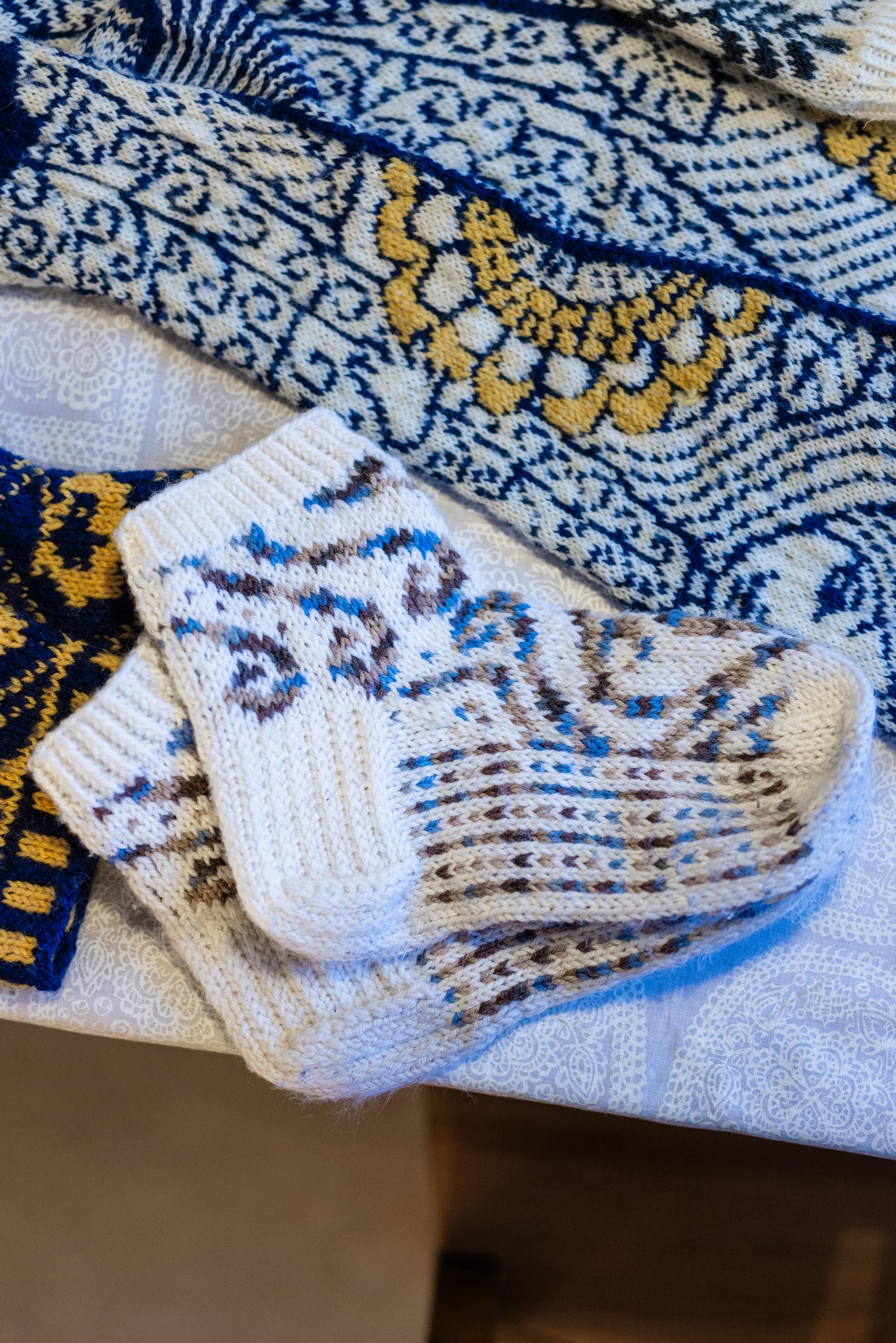
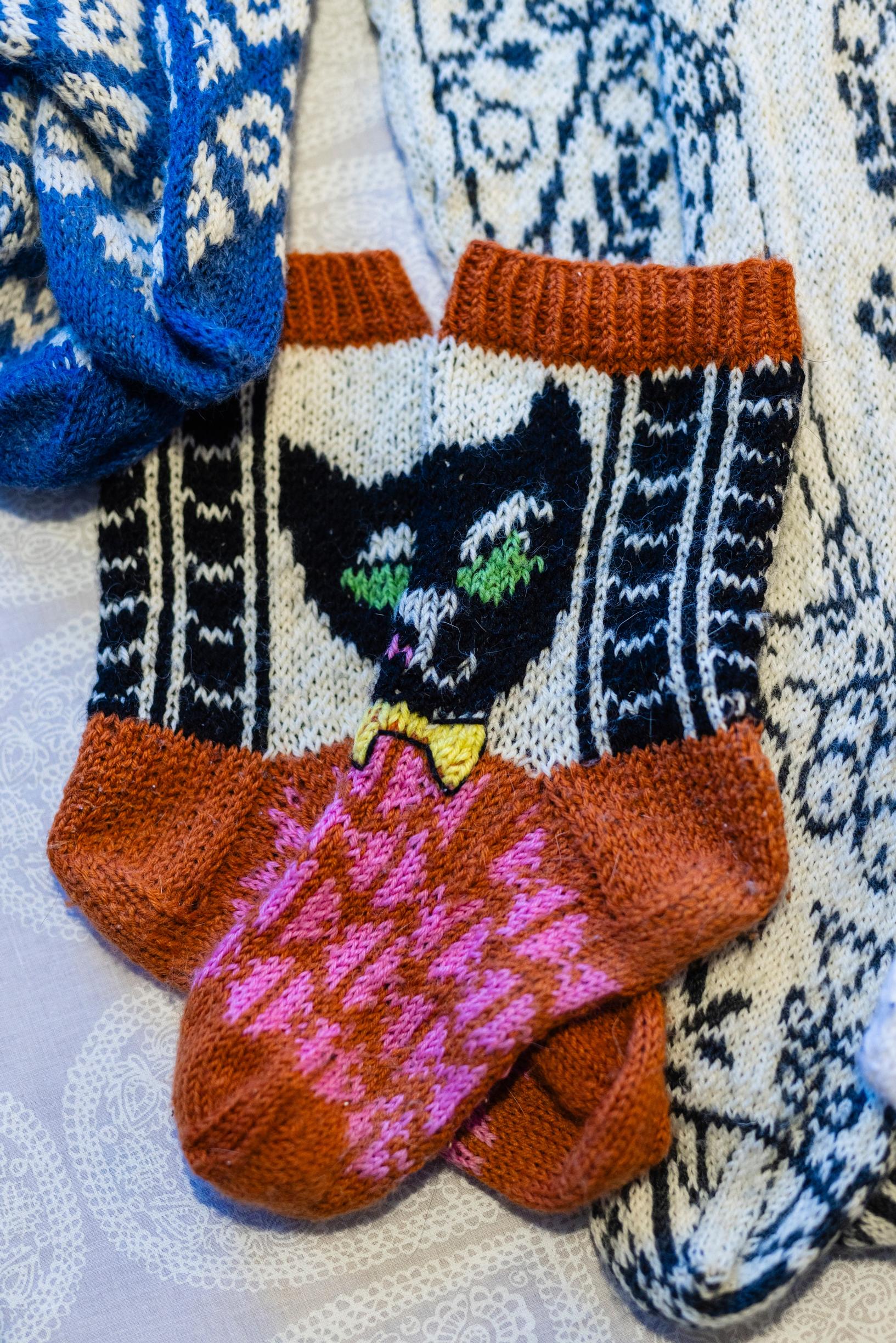
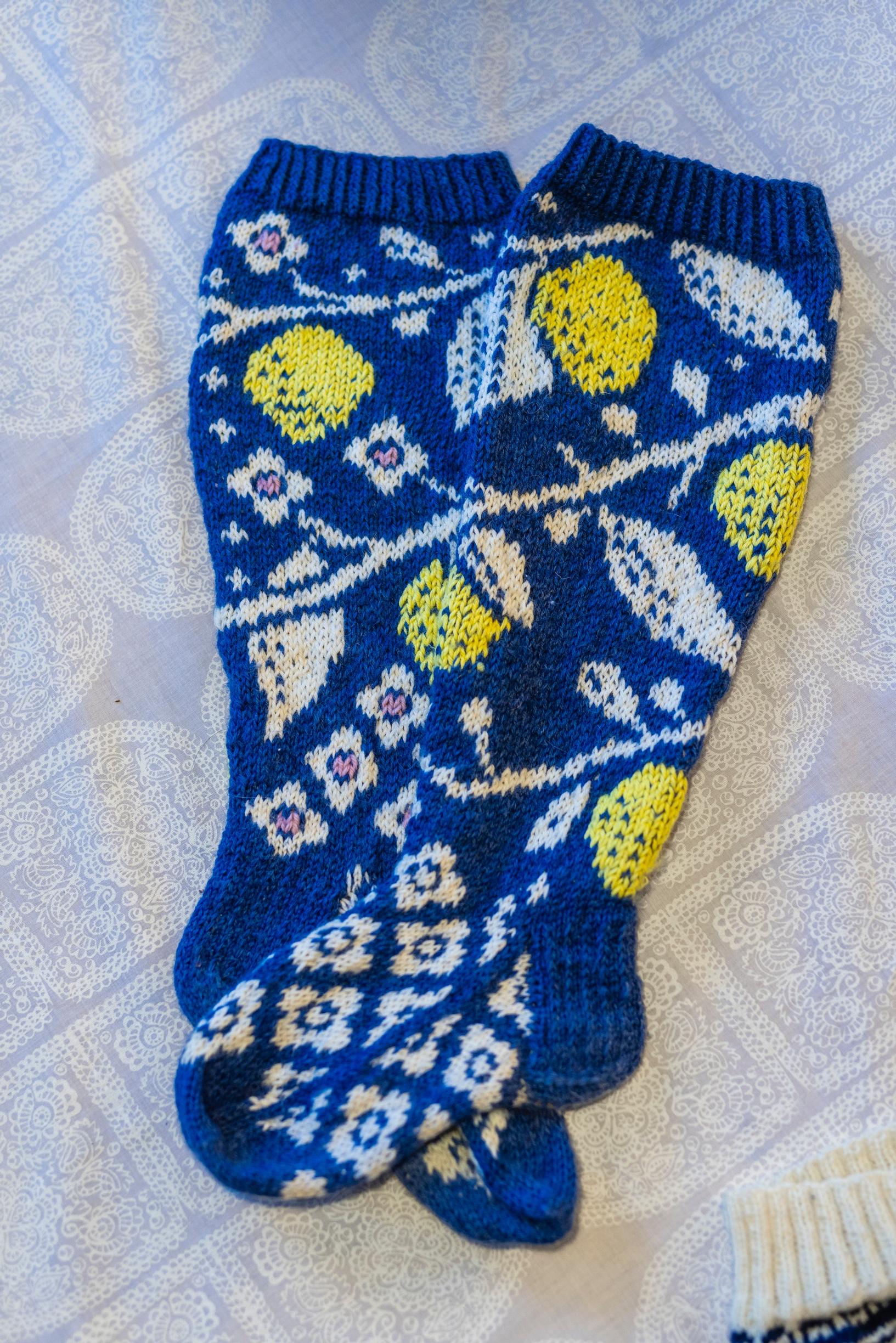
Kaija fell ill with cancer in 2022. Despite initially promising treatment results, she passed away a year and a half later, in August 2023.
Although Juha had time to prepare for her passing in her final months, the intensity of his grief was still a shock.
“I’d imagined grief to be somehow calm or dignified, but it was just a total emptiness.”
Juha could not understand why cancer had to take away his spouse who was only in her sixties.
“We were so symbiotic that it feels like half of me was torn away.”
Kaija continued to do crafts right up to her final days. Even while she was sick, she sewed cotton hats for other cancer patients.
“She really was that kind of wonderful person.”
“Her words have been like precious gems that have lit my way after her passing. She left the green light on for me at the crossroads.”
Juha suspects that for Kaija, knitting was a link to her healthier years and gave her a sense of creative joy as her carefree moments grew fewer and worries mounted.
Juha, on the other hand, put down his needles. He needed something entirely his own to help him process his emotions. He bought an electric guitar and an alto saxophone, fixed up his son’s bass, borrowed a drum kit, and set out to learn them all.
“When the situation started getting really bad, playing music helped me escape.”
During her last summer, Kaija wanted to talk with Juha about the life after she passed. She said she'd give him her blessing if he wanted to find a new partner. Juha was horrified and didn’t want to think about it. Now he wonders how much of a struggle it must have been for her to let go of him.
“Later, her words have been like precious gems that have lit my way after her passing. She left the green light on for me at the crossroads.”
Juha fulfilled Kaija’s promise faster than he ever would have imagined.
At the funeral, standing by the coffin, Juha said: “Thank you for everything, my love. See you when I get there!”
Even though his faith and hope of seeing her again offered some comfort, life lost all color after the funeral. Juha says he has never cried as much as he did in the weeks following Kaija’s death. He couldn’t sleep, and the days passed him by.
In the evenings, Juha would marvel that he had survived yet another day. Music brought him comfort, and he poured his longing into composing. He even wrote a song in his home studio about losing Kaija.
“When I finished it, I felt strangely proud of myself in the middle of such darkness. I had managed to express my emotions successfully.”
“Falling in love was just as unexpected as the grief. All I could do was breathe and try to keep my head above the water.”
One day Juha looked up at the sky and sighed that if there really was someone new meant for him, could she appear in his life now.
Soon after, he met Clara in a Facebook group for Christian widows and widowers. Falling in love was like a tidal wave that swept him away.
“It was as unexpected as the grief. All I could do was breathe and try to keep my head above the water.”
Juha stayed away from knitting for over a year. Then, in the fall of 2024, he started thinking about knitting something for Clara. However, he no longer remembered how to make a stitch.
He dug out Kaija’s old tutorial videos. Hearing his wife’s voice and seeing her familiar movements brought tears to his eyes and gave him goosebumps.
“I was watching instructions by my late wife so I could knit for my new love. It felt as if I was balancing on the edge between my old and new lives.”
His fingers soon slipped back into the familiar rhythm. Everything came flooding back, and he noticed he was picking it up quickly.
Kaija’s unfinished crafts were distributed among their daughters and relatives, though Juha kept a few himself.
Juha still has the two Icelandic sweaters that set off his knitting obsession: one made by Kaija and one by him. However, after Kaija’s passing, her handiwork became just clothes. When they turn up in the closets, Juha doesn’t feel sadness but sees them as beautiful memories.
Kaija managed to teach him a wealth of techniques and tricks in four years. Still, Juha regrets one thing.
“I should have kept a better, more detailed journal of my projects so I wouldn’t make the same mistakes again.”
Kaija kept such a journal. Juha hasn’t looked at it yet.
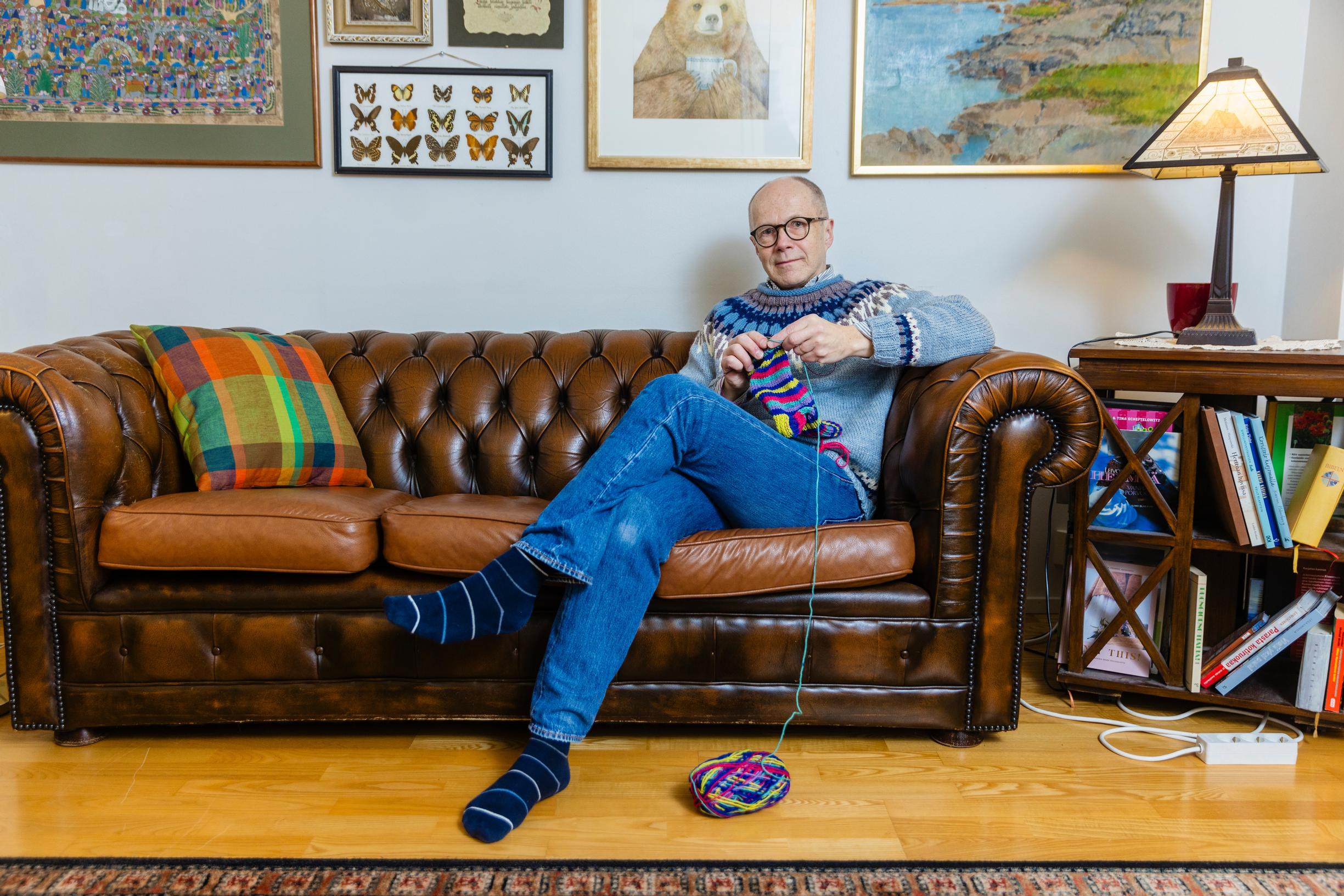
His grief over Kaija’s death hasn’t disappeared, but according to Juha, it has changed significantly over the past year. It’s no longer constant like it was immediately after her passing; instead, it comes in waves. For instance, a movie can suddenly bring the loss back to his mind.
Juha and Clara have agreed that they can cry over their late spouses on each other’s shoulder. Neither needs an explanation—the other already understands what the grief feels like.
“We’ve realized that our losses will always be a part of our relationship.”
Clara also knits, but so far Juha has knitted for her on his own. Knitting has once again become such an important part of Juha’s life that he might find himself thinking about a tricky pattern while he's out for a run or doing bench presses.
Knitting also calms him and gives him something to do. His children have moved out, and Clara lives in another city, so Juha spends a lot of time on his own.
“Knitting is meditative. It often gets me into a flow state where everything else fades away.”
They have already talked about knitting together, and there will likely be tears then, too.
“A couple of days before she died, Kaija said the joy would return someday. I think she was talking about something like this.”
